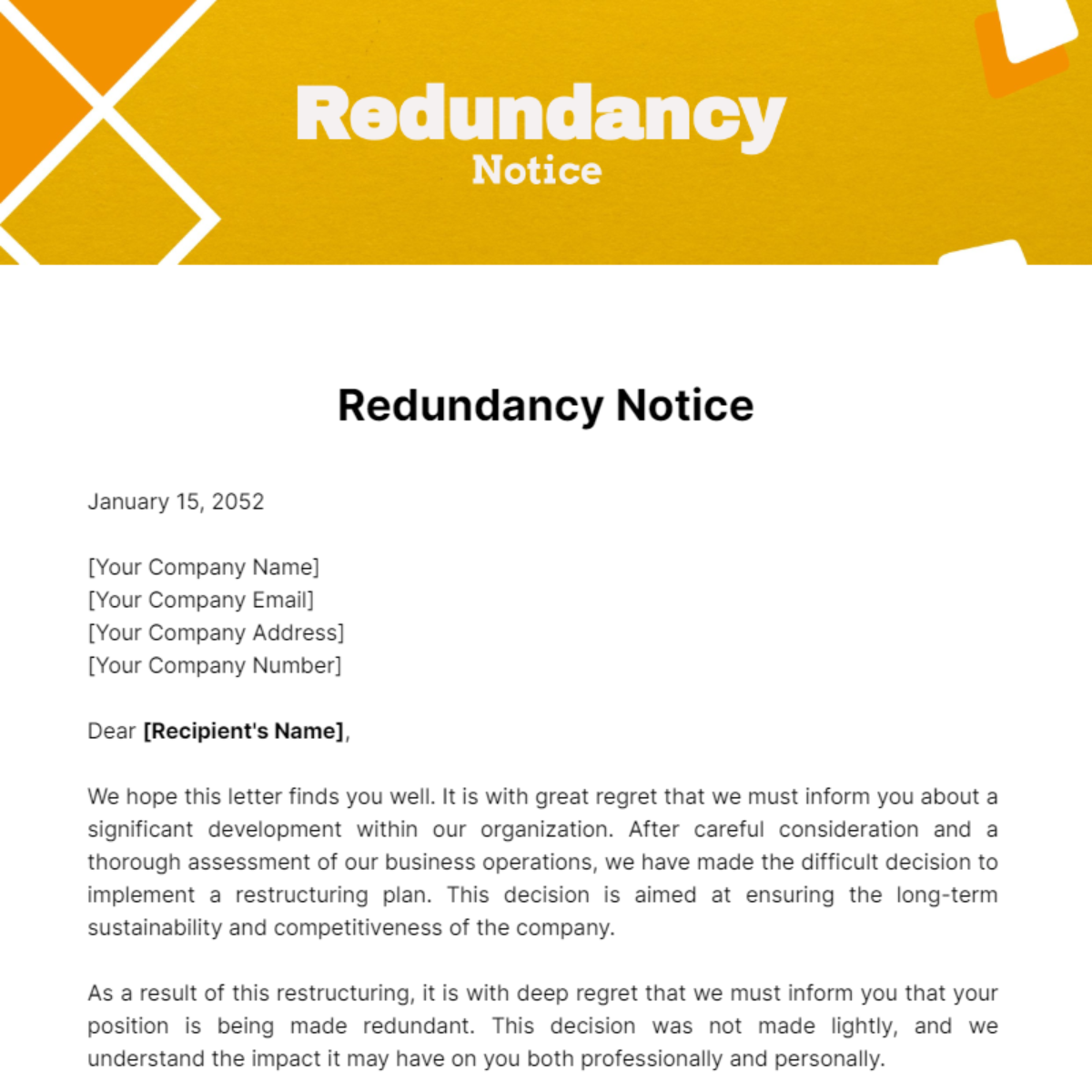Your Rights to Redundancy If Company Goes Bust: UK Employee Protections
Your Rights to Redundancy If Company Goes Bust: UK Employee Protections
Blog Article
Checking Out the Interplay In Between Company Redundancy and Business Versatility for Future Development
In the vibrant landscape of today's business globe, the intricate connection in between company redundancy and organizational flexibility emerges as an important variable for sustained growth and success. Firms frequently deal with the obstacle of striking a delicate equilibrium in between maintaining a level of redundancy to alleviate threats and cultivating versatility to respond quickly to the ever-evolving market needs.
Significance of Business Redundancy
Firm redundancy is a vital component that improves business durability and minimizes operational risks. By including redundancy measures within the organizational structure, firms can much better hold up against unforeseen disturbances and variations in the business setting. Redundancy functions as a critical barrier, enabling business to adapt and respond effectively to unanticipated challenges without jeopardizing important operations.
One key facet of the relevance of business redundancy is its duty in making sure continuity during times of crisis. When confronted with abrupt modifications or emergency situations, redundant systems, sources, or workers can action in to keep important features and avoid widespread disturbances. This connection not only safeguards the firm's online reputation and client trust yet likewise reduces economic losses and functional downtime.

Methods for Organizational Versatility

Another vital strategy is investing in technology and facilities that can sustain versatility and scalability. Implementing digital tools, automation, and information analytics can enhance procedures, boost efficiency, and supply useful insights for informed decision-making. In addition, developing versatile organizational structures that enable quick modifications to market dynamics and customer needs is vital for staying competitive in a rapidly developing environment. By proactively identifying potential disruptions and opportunities, companies can proactively adjust and grow in an ever-changing service landscape.
Harmonizing Redundancy and Versatility
Attaining a harmonious balance between operational redundancy and organizational flexibility is extremely important in browsing the intricacies of a vibrant service setting. Striking the appropriate balance between redundancy and adaptability is a delicate process that calls for a deep understanding of the organization's see here objectives, sector characteristics, and danger tolerance.
To accomplish this balance, companies need to conduct normal evaluations of their procedures to determine locations where redundancy is required for threat mitigation and where flexibility can drive technology and development. Implementing flexible frameworks, fostering a culture of continuous discovering and enhancement, and encouraging open communication throughout all degrees of the company are vital strategies to harmonize redundancy and adaptability efficiently. By lining up these two important elements, companies can position themselves for sustainable growth and success in an ever-changing service landscape.
Study on Adaptation Success
In analyzing instances of successful organizational adjustment, it ends up being check over here obvious that the interplay in between operational redundancy and flexibility is a defining aspect in shaping resilient businesses. One engaging study is that of Netflix. Originally a DVD rental solution, Netflix demonstrated remarkable flexibility by transitioning into a streaming system when digitalization interrupted the industry. By purposefully spending in technology and web content development, Netflix not only prospered but endured in a quickly evolving market. An additional standout example is Amazon. Beginning as an on the internet bookstore, Amazon continually adapted its organization design, expanding right into varied industries such as cloud computing and fabricated knowledge. This flexibility allowed Amazon to remain ahead of rivals and meet changing customer demands. Last but not least, Adobe offers a noteworthy picture of effective adaptation. The business shifted from marketing software application licenses to a subscription-based model, making sure repeating income streams and boosted client engagement. These study emphasize the importance of functional redundancy combined with business adaptability in cultivating long-lasting growth and competitiveness.
Building Durability for Future Growth
Structure strength for future development calls for a critical alignment of operational processes with market dynamics and emerging patterns. Companies need to adjust to transforming settings by cultivating a society of flexibility, development, and continual renovation. Strength involves not just recuperating from troubles but additionally proactively planning for future challenges. One key element of building strength is investing in durable risk administration approaches to minimize possible disturbances. This consists of circumstance preparation, expanding supply chains, and establishing contingency strategies for different contingencies (who pays redundancy money).
Moreover, promoting solid connections with stakeholders, such as consumers, workers, distributors, and the area, is important for weathering uncertainties and maintaining trust and support during unstable times. Effective interaction and transparency play a crucial function in building durability, as they aid help look at more info with and straighten expectations partnership in browsing unpredictabilities.
Furthermore, organizations need to prioritize discovering and growth initiatives to upskill workers and furnish them with the essential devices to adapt to changing scenarios. By spending in their labor force, firms can enhance their versatility and agility, eventually reinforcing their strength for lasting future growth.
Conclusion

In the vibrant landscape of today's company globe, the elaborate partnership between firm redundancy and organizational flexibility emerges as a vital factor for continual growth and success. Firms typically encounter the challenge of striking a delicate equilibrium in between maintaining a degree of redundancy to reduce threats and promoting adaptability to react swiftly to the ever-evolving market needs.To attain this equilibrium, companies require to conduct routine analyses of their operations to determine locations where redundancy is essential for risk mitigation and where flexibility can drive development and development.In conclusion, the interplay in between business redundancy and business adaptability is critical for future growth. Building durability via a combination of redundancy and versatility will make sure that firms are prepared for the challenges of the future.
Report this page